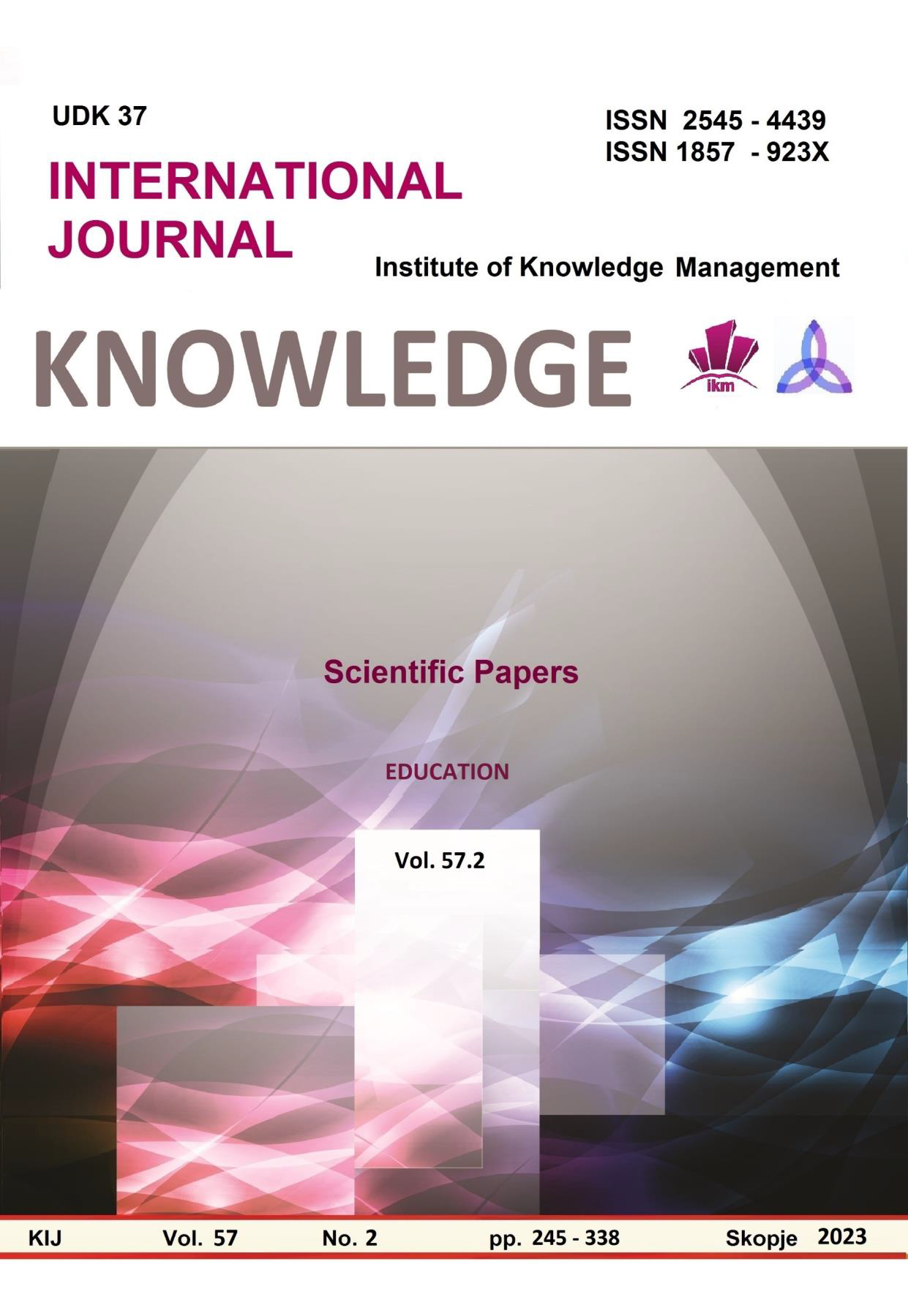THE RISK FACTORS FOR THE EMERGENCE OF AGGRESSION AND THE INFLUENCE OF COGNITIVE DISMODERATION INTERCOURSE IN CHILDREN OF PRIMARY SCHOOL AGE
Keywords:
Primary prevention of aggression in children of primary school age based on the cause of students' aggressive behavior, cognitive dismoderate intercourse between them and the concepts of preventive activity at school aimed at analyzing behavioral deficitsAbstract
To overcome aggression, extracurricular activities can be used, which in general allow for more interactivity, through which children's analytical skills are developed. These activities can be led by a resource teacher to plan and develop communication, both on an emotional and psychological level, and in the context of inclusion and overcoming differences in the socialization process. In school, you can work with a specific method of preventive-pedagogical activity, the mirror reflection approach, this is the way we can show the child what his behavior actually is and how it affects others.
The research methodology includes the analysis of the prerequisites for deviations in children's behavior and the ways to reduce them.
The purpose of the study is to systematize the different views on the problem of deviance.
The results show the need to improve the relationships between children, there is a noticeable decline in the value system, there is a lack of respect on their part towards the elders. The discipline of adolescents in the school institution is not at the level required for them to be educated and develop fully as individuals.
The groups in which the person is socialized are diverse, but in relation to adolescents, the relationships in the school class show moral degradation. Aggression in the context of everyday school life predetermines the answer to the question, to what extent the school is responsible for the manifestations and growth of aggression. On the one hand, the school as an institution reflects the social conditions, the origin of aggression is often laid outside it (from the school) in terms of the breakup of families, the mixing of different educational styles, different intelligence or material well-being, in which the school becomes an arena of playing out social conflicts and problems. On the other hand, the school is a determining and evaluating institution, creating inequality, division, hierarchy, determining the success or failure of the individual student, and thus the institution itself inevitably creates conditions that can cause aggressive behavior, subsequently reaching the internal personal aggressiveness of the students themselves. (Andreeva, L., 2007)
At the level of primary prevention of aggression, it is necessary to emphasize the development of moral values and, above all, respect for the interlocutor. The characteristics of the causes of aggressive behavior are associated with the influence of the friendly environment on the child's behavior. The reasons for aggressive behavior must be assessed from different behavioral configurations, on the one hand refracted through individual-psychic features and on the other hand concretized in the emotional-psychic relations with the immediate social environment. (Popova, Sn., 2000)
References
Андрева, Л. (2007). Социалното познание и междуличностните взаимоотношения. Университетско издателство „Св. Климент Охридски”, София.
Бижков, Б. (2014). Социално педагогическа и пастирска работа с криминално проявени деца жертви на наркотици и деструктивни култове. Университетско издателство „Св. Климент Охридски”, София.
Божкова, В (2023). Комуникацията при децата от начална училищна възраст като предпоставка за агресията и влиянието на когнитивно дисмодерационното общуване. COMMUNICATION IN CHILDREN OF PRIMARY SCHOOL AGE AS A PREREQUISITE FOR AGGRESSION AND THE INFLUENCE OF COGNITIVE DISMODERATE INTERCOURSE. В: Международна конференция the International Journal: „Invited Scientific Papers”. Institute of Knowledge Management, Vol. 56., No.2, pp.141-236, ISSN 2545-4439; ISSN 1857-923X.
Валявичарска, М. (2022).Същност и особености в работата на ресурсният учител, подпомагащ приобщаващото образование на деца и ученици със специални образователни потребности. Основни функции. Essence and characteristics of the work of the resource teacher, supporting the inclusive education of children and students with special educational needs. В: Международна конференция the International Journal: „Invited Scientific Papers”. Institute of Knowledge Management, Vol. 55., No.2, pp.187-384, ISSN 2545-4439; ISSN 1857-923X. Петров, Г. (2000). Детската престъпност. „Хермес”, София.
Василева, С. (2022). Децата и пчелите – вътрешно проектна дейност за формиране на компетентности. The children and the bees - an internal project activity with the means of forming competences. В: Международна конференция the International Journal: „Invited Scientific Papers”. Institute of Knowledge Management, Vol. 55., No.2, pp.187-384, ISSN 2545-4439; ISSN 1857-923X.
Василева, Е. (2004).Съвременното начално училище – реалности и предизвикателства. Университетско издателство „Св. Климент Охридски”, София.
Вълчев, Р. (2004). За образованието и възпитанието на нашето дете. Център отговорно образование, София.
Георгиев, Т. (2005). Когато учителят няма педагогически такт. Фондация „Проф. д-р. Тодор Ташев”.
Димитрова, Д., & Василева, К. (2013). Приятелството в живота на детето. В: сп. „Педагогика”, кн. 1.
Дерижан, И. (2001). Технология на социалната работа с деца. Университетско издателство „Н. Рилски”, Благоевград.
Пеевски, В. (2007). Превенцията основна дейност на местната комисия. В: Обществено възпитание кн. 2, с.24-26.
Попова, Сн. (2000). Полово възпитание на учениците. Издателство – „Веда Словена – ЖГ”, София.
Сергеева Милкотева, Д. (2023).Наръчник на учителя. Teacher's Handbook. В: Международна конференция the International Journal: „Invited Scientific Papers”. Institute of Knowledge Management, Vol. 56., No.2, pp.141-236, ISSN 2545-4439; ISSN 1857-923X.
Събева, Е. (2007). Социално-педагогически измерения на семейството. Университетско издателство „Паисий Хилендарски”, Пловдив.
Тодорова, Д., & Мършелева, Й. (2013). Изкуството като възможност за превенция на агресията. В: сп. „Педагогика”, кн. 1.
Фром, Е. (2003). Анатомия на човешката деструктивност. Превод от английски език – Ганев, Владимир. Издателство: „Захари Стоянов”, София.
Христова, В. (2023).Стимулиране на нестандартността чрез екологичното образование в начален етап. Stimulating non-standardization through environmental education at the primary stage. В: Международна конференция the International Journal: „Invited Scientific Papers”. Institute of Knowledge Management, Vol. 56., No.2, pp.141-236, ISSN 2545-4439; ISSN 1857-923X.
Чавдаров, Д. (2008). Агресията от двигател на процеса до брутално насилие. Академично издателство „Проф. Марин Дринов”.





